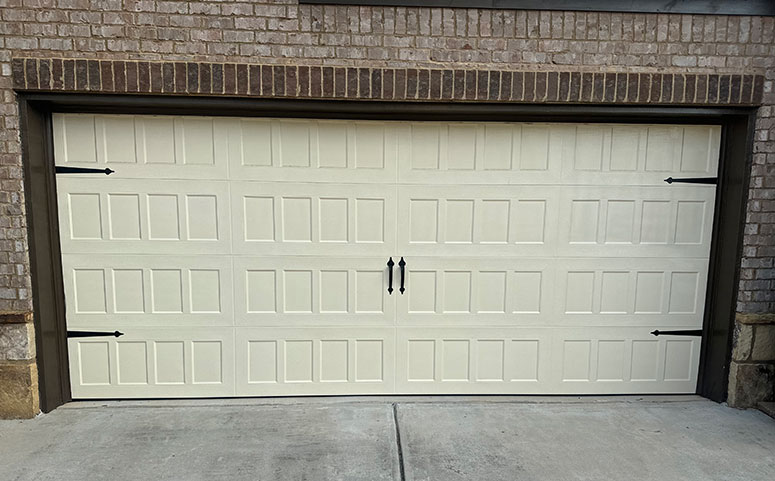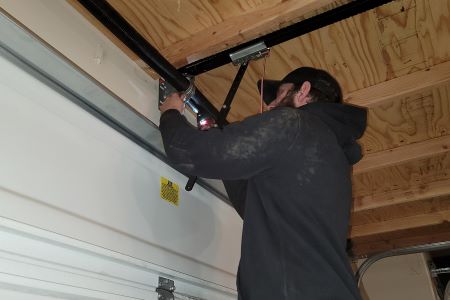Usual Garage Door Troubles and Just How to Deal with Them
Garage doors are essential for both safety and security and ease, yet they typically present a variety of usual concerns that can discourage home owners. Troubles such as too much sound during operation, doors that stop working to open or shut, misaligned tracks, and malfunctioning remotes can arise without warning. While some concerns may appear straightforward to resolve, others might call for a much more nuanced understanding of garage door mechanics. Dealing with these problems properly not just improves capability however additionally extends the life of the door. One might wonder what actions are required to tackle these difficulties successfully.
Noisy Garage Door Procedure
A loud garage door operation can be a significant source of inconvenience for homeowners, frequently indicating underlying mechanical concerns. Such interruptions may originate from different causes, consisting of worn-out rollers, loose hardware, or not enough lubrication. Determining the source of the sound is vital for reliable resolution.
One usual reason for extreme noise is the existence of rusty or worn-out rollers. In time, these elements can weaken, bring about grinding or squealing audios as the door steps. Routine examination and substitute of these rollers can significantly minimize noise levels. Additionally, loose screws or screws in the door mechanism can produce rattling audios during operation. Tightening up these bolts makes certain a much more secure and quieter motion.
Another adding element is inadequate lubrication of the door's moving components. Applying a top notch lubricant to the tracks, springtimes, and rollers can greatly decrease rubbing and noise. Homeowners need to do this maintenance occasionally to preserve optimal performance.
Lastly, the garage door opener may also produce sound as a result of its age or mechanical issues. If the noise continues regardless of resolving other elements, consulting a specialist for a thorough examination and prospective repair service might be essential.
Door Won't Open or Close
Experiencing a garage door that won't open or shut can be extremely discouraging and often signifies a malfunction within the system. Numerous aspects can add to this concern, and recognizing the origin is vital for effective resolution.

Next, inspect the safety sensors situated at the base of the door. These sensing units can come to be misaligned or obstructed by debris, stopping the door from running correctly. Tidy the sensing units with a soft fabric and ensure they are aligned.
Additionally, the garage door's inner elements ought to be assessed. Problems such as a busted spring, worn-out rollers, or a damaged opener can impede movement. If any type of useful reference parts show up to be harmed, it might be recommended to speak with an expert for repair work.
Misaligned Tracks
(Affordable Excellence)Misaligned tracks can severely interrupt the smooth procedure of a garage door, resulting in functional failures such as unequal motion or total immobilization. This concern generally emerges due to a variety of aspects, including wear and tear, unintentional impacts, or improper setup. When the tracks are misaligned, the rollers can not relocate easily, which not only stresses the electric motor but additionally postures safety and security threats.
To recognize imbalance, visually examine the tracks for gaps or irregular spacing. If you see any discrepancies, it is essential to address the concern immediately - garage door service. Begin by loosening the screws that protect the track to the wall, permitting adjustments. Very carefully touch the track back right into its appropriate placement utilizing a rubber mallet or a similar tool, guaranteeing it is straight and degree.
Routine upkeep, including cleaning up the tracks and making certain rollers are in good condition, can stop future imbalances. By addressing misaligned tracks immediately, you can bring back the functionality of your garage door and improve its longevity.
Broken Springs
Among the various elements of a garage door system, broken springs are among the most usual problems that can dramatically hinder its functionality. Garage door springs are critical for balancing the weight of the door, enabling smooth opening and closing. When a springtime breaks, it can cause a door that is hard to operate or, sometimes, totally unusable.
There are 2 major kinds of springs: torsion springtimes, which are placed over the door, and extension springs, discovered on either side. Indications of a damaged spring consist of a door that will not open, a noticeable void in the springtime, or a loud sound throughout operation. Attempting to operate a garage door with a damaged springtime can create more damages to the door or the opener.
Fixing broken springs is not a DIY project; it requires specialized devices and know-how because of the high stress included. It is a good idea to speak with a specialist specialist that can securely change the springtimes and make sure the door is appropriately stabilized. Routine maintenance and assessments can help stop spring failures and expand the lifespan of the garage door system.
Push-button Control Issues

If the remote still falls short to operate, evaluate the garage door opener to ensure that its sensing units are clean and unobstructed. Dust, debris, or imbalance may hinder the signal transmission in between the remote and the opener.
Interference from other digital tools can also hinder remote capability. Make sure that close-by gadgets, such as cordless routers or cordless phones, are not triggering disturbances. garage door service. If disturbance is thought, attempt relocating these tools better away from the garage door opener
In some cases, the remote might require to be reprogrammed. Speak with the manufacturer's standards to reset the remote control and integrate it with the garage door opener. If all else stops working and the remote proceeds to malfunction, take into consideration consulting a specialist technician for a complete inspection and possible substitute of the remote or opener.
Conclusion
(Comprehensive Coverage)In summary, usual garage door problems can dramatically influence capability and safety. Addressing noisy procedure includes lubrication and tightening hardware, while issues with opening or closing need examination of source of power and sensors. Misaligned tracks can be corrected with change, although broken springs require expert intervention. Push-button control malfunctions commonly emerge from weak batteries or interference, which can be resolved with substitute or reprogramming. Aggressive upkeep and timely repairs can make certain optimal efficiency and durability of garage doors.